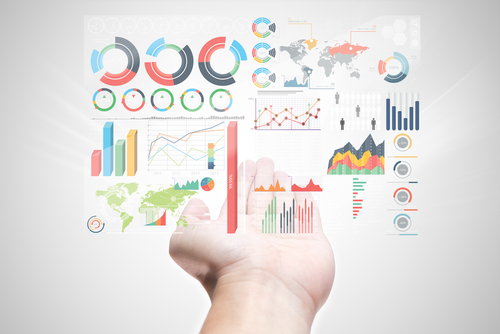 Reading Time: 3 minutes
Reading Time: 3 minutesContent marketers always need to be searching for new ways to convey value to their target audiences and customers. This could mean offering valuable promotions or supplying an audience with relevant and valuable information and insights. However, content marketers also face unique challenges in today’s fast-paced digital advertising landscape. Modern customers face near constant bombardment of content and advertisements from all angles, and it’s vital to make timely but memorable impressions on potential leads.
Infographics are simple but effective tools in any marketing professional’s arsenal. An infographic is essentially a detailed list of information and statistics presented in an easily digestible visual format. Visual content is extremely effective in the modern marketing landscape, and well-crafted infographics can provide a marketing professional with a competitive edge.
Benefits of Using Infographics
Why use infographics? Modern consumers and online browsers want the most relevant information as quickly as possible, and infographics enable marketers to deliver this in a visually captivating presentation. Marketers will notice several benefits to using infographics:
- Infographics are eye-catching. If the average person browsing the web has the option to digest content from your infographic or a competitor’s clunky page full of dully presented statistics, which do you believe will draw the user’s attention first?
- Infographics are quick, valuable resources for speedy digestion of information. Instead of reading through complex statistics, readers can refer to visual representations of the same data to absorb the information faster and more completely.
- A well-made infographic confers authority to your brand. When a user notices that you have developed an eye-catching and detailed infographic that covers lots of useful information in an easily digestible format, this inherently cultivates authority for your brand in the mind of the user.
- Thoughtful, accurate, and visually appealing infographics set you apart in your niche. If your competitors cannot offer your target consumers and audience the same information in an appealing format, this sets you ahead of the pack in your market.
Infographics are a fantastic method for transmitting useful and relevant information to your customers. In some cases, they may be the deciding factor for a consumer considering a purchase from you or your competitors.
Developing High-Quality Infographics
The heart of any infographic is the information it contains. Your infographic may be beautifully rendered but fall flat due to misrepresented statistics, flawed research, or incomplete or outdated information. Start your infographic development process by clearly defining the objective you expect the infographic to fulfill. Are you presenting information specific to one topic or a general overview of a broader topic? Define the scope of information you wish to cover, and then begin researching relevant statistics and data that covers that scope.
Your research phase is the most crucial part of infographic development. No matter what topic or data you decide to cover, it is absolutely essential that you ensure your information is accurate and reliably sourced. Some of the best sources to use include:
- Government agencies. For example, if you are presenting an infographic concerning traffic data or vehicle accident rates, you would probably want to refer to statistics from the Department of Transportation and the National Highway Traffic Safety Administration. Most government agencies release reports concerning their areas of involvement in public life, and they have a responsibility to report this information as accurately as possible to the public. Government sources are some of the most reliable you can find for an infographic.
- Scholarly sources. Fields like medicine, technology, and applied sciences evolve constantly, and new research breakthroughs are almost always making waves in these communities. If you’re reporting any kind of scholarly data, be sure to find reputable sources with recent data and check for conflicting studies. In some cases, conflicting studies can actually enhance your infographic.
- Research centers. Many non-government organizations, nonprofit organizations, and think tanks publish their findings on a regular basis. If your market could benefit from the information included in these reports, verify their contents and include them in your infographic report.
These are great starting points to find the information you need to create a relevant and valuable infographic. Once you’ve defined the scope of your infographic project, compiled your data, and verified your findings, you can begin with the design phase.
Constructing Your Infographic’s Visual Design
Now that you have the information you wish you present to your readers, present it in a visually captivating way that allows for easy digestion of the included data. If you have an in-house graphic design team, consult with them to determine the best ways to visually represent your data. This is the time to get creative. Pie charts and bar graphs may make it easier for readers to consume the information you wish to convey, but these formats aren’t terribly interesting.
If you need outside help with the construction of your infographic’s design, you can find lots of free tools, templates and other assets online. Think outside the box for ways to represent your data in interesting ways. A few options to consider might include:
- Flowchart-styled infographics.
- Visual timelines.
- Side-by-side visual comparisons.
- Large-scale graphs with visually interesting construction.
Infographics are great assets for virtually any brand. Consider your design options and carefully define the scope of your project to create a successful infographic that captures your audience’s attention and cultivates credibility for your brand.




